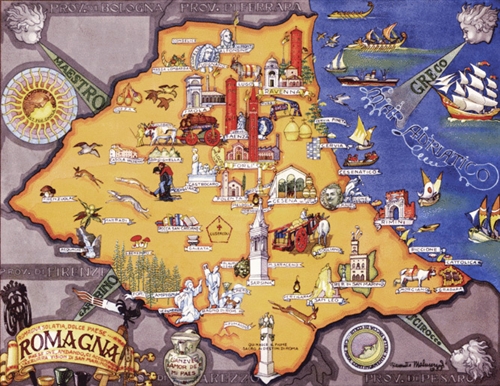The Name "Romagna"
 "Nomina sunt consequentia rerum": as the Latin saying, in the name there is the essence of things ...
"Nomina sunt consequentia rerum": as the Latin saying, in the name there is the essence of things ...
The term Romagna derives from Romània and Romandiola, that means "Land of Rome": a definition of the Exarchate of Ravenna, which included most of Romagna and going back to the Roman occupation two centuries BC when Rome took the place of the Celtics.
So today the territory and traditions of Romagna retain traces of the two cultures. As the existence in Romagna in three New Years: that of January 1, consolidated in the Middle Ages, the Celtic New Year which runs from the first to 11th November, the feast of San Martino and the Roman on March 1st, still celebrated in various parts of Romagna.
Refers to the Celtic New Year the preparation between late October and early November of " broad bean of the dead", variously colored round cakes, with aniseed seeds. They are prepered to remind the ancient custom of eating broad bean in honor of the dead, that at the begining of November returned to earth to "renew the time," and close the agricultural season and propitiate the new one.
For the same reason, for San Martino, there is the tradition of eat chestnuts and drink freshly drawn Sangiovese wine, to s accumulateymbolically force that will be emitted in the new agricultural season.
The Roman New Year on March 1st is still remembered - especially in the hilly area – with the ritual of "Lume a Marzo",when the lighting of bonfires, last three evenings of March and in the firs thre of April, or only during the night of passage between the two months. The fire, thanks to its power to purify, has the task of eliminating all the negative influences of the past agricultural season and to propitiate those who are about to begin.